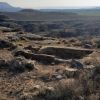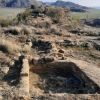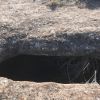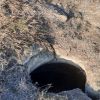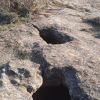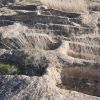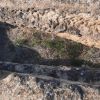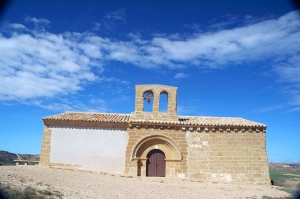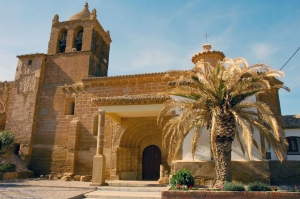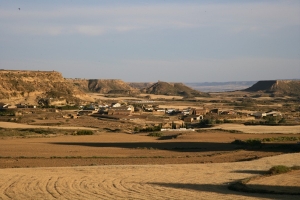Between the years 1100 (year of the conquest of Barbastro) and 1134, Alfonso the Warrior led the expansion and development of the Alto Aragon region. By removing the Muslim threat he made way for confident repopulation and the expansion and control of the territories was achieved thanks to the creation of new settlements. These were usually in strategic locations in terms of their height, closeness to water and access to communications. The archaeological remains of La Torraza date back to the 12th century and should be considered in this context.
The nearby village of El Tormillo was also inhabited at the same time and the church was contemporary with the buildings of La Torraza. However, El Tormillo prospered while the village of La Torrazo faded and died.
Other similar settlements such as El Almerge (Laluenga), which was fortified, on a high slope and near water, was also abandoned but the reasons are unknown.
The site can be found on a long hill that runs north to south and covers an area of approximately 150 x 50 metres. Its name, Torraza, makes reference to the collection of stones and ashlars that are probably the remains of a tower. (torre)
Part of the fortress that once watched over the settlement can still be seen, as can the remains of a moat that would have protected the villagers from attacks from enemies.
Access is gained via a set of stairs carved from the rock, which shows evidence of fittings for gates and other closures. A large part of the hilltop is covered with the remains of villager’s houses and the site also reveals an interesting container that was carved from the rock to store grain.
The necropolis is, without doubt, the most spectacular part of the old settlement and one of the most important of its kind in Aragon. It is located to the far side of the mound.
It contains 30 tombs, three of which belong to children. All are anthropomorphic and have been carved from the solid rock. The tombstones have mostly disappeared but the fittings that held them in place remain. The dead were buried clothed and probably wearing jewellery or other adornments alongside a funeral trousseau.



